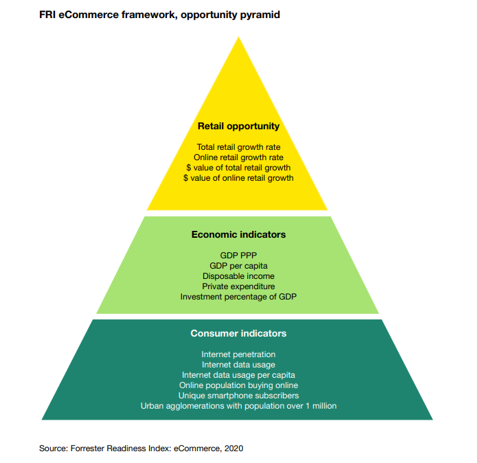
Dive Brief:
-
With their physical locations likely shut for several more weeks due to the COVID-19 pandemic, department stores have just five to eight months, depending on their situation, before liquidity becomes a risk factor, according to a note last week from Cowen & Co. The analysts said they measured liquidity as cash plus revolvers, relative to key costs like rent, labor, interest and committed dividends.
-
With zero physical revenue, J.C. Penney (assuming $137 million of monthly e-commerce revenue) has about eight months of available cash, while Nordstrom (with $350 million from e-commerce per month), has about seven months — the two players faring best among those Cowen studied.
-
Meanwhile, Macy’s (with $449 million from e-commerce monthly) has about four and a half months of available cash, and Kohl’s (with $346 million in monthly e-commerce), has about five months’ worth, the analysts said in emailed comments.
Dive Insight:
Although e-commerce growth has outpaced brick-and-mortar sales growth for years now, physical stores remain the principal source of sales, especially for department stores. The closures forced by the pandemic as a way to help stem its spread, then, are a major blow to the segment.
There are ways to stretch the cash on hand, according to the Cowen team, led by Oliver Chen. With labor representing some 10% of sales, for example, the retailers could reduce that expense in a variety of ways, including by furloughing employees, reducing pay for headquarter staff and executives, and reducing hours for store workers, they said.
Furthermore, the retailers could benefit from outside help, including, potentially, business interruption insurance, rent abatement for the next 120 days, or liquidity relief from the government through “federal guarantees against working capital lines of credits, tax deferral on payroll taxes, and deferment or elimination of existing duty collections,” they also said.
But liquidity is just one risk factor, and none of these players are likely to come out of this predicament without permanent closures of major portions of their fleets, according to Nick Egelanian, president of retail development firm Siteworks. Case in point: Cowen puts J.C. Penney at the top of the heap. In Cowen’s analysis, thanks to what those analysts calculate is $386 million in cash at the end of the fourth quarter, plus a $1.4 billion revolver (from which the retailer drew down $1.25 billion this month), leaving $1.25 billion. The retailer has $105 million in debt due in June, and owes $10.55 million in quarterly principal payments on its term loan, per Cowen.
But, while J.C. Penney “does have a large cash hoard well over a billion dollars,” it also faces a multi-billion dollar debt maturity in a couple of years, according to Egelanian. More, it’s struggling badly, reflected in its share price last week of less than 40 cents, he said.
“While liquidity is not its biggest issue, its creditors and shareholders will have to decide whether to throw good money after bad to keep it operating, knowing the debt gets closer to maturity every day,” Egelanian told Retail Dive in an email. “The current situation is not sustainable without at minimum a major debt restructuring.”
Nordstrom is likely the strongest player in this group, but even that retailer will likely have to face what has been a reality for all of them, made only more stark by the pandemic-induced closures: the need to pare their physical footprints, he said. Nordstrom will probably have to shutter as much as a third of its full-line stores, and “Macy’s still needs to close up to 500 more stores,” he said. Southern department store Dillard’s, which has faced backlash as one of the few in the segment, along with Sears, in keeping stores open, will nevertheless have to close down select stores for good, “particularly in dying … malls.”
And Penney? Like Sears, according to Egelanian, it’s unlikely to come out of this public health-forced disruption, which is speeding up certain inevitabilities for the whole segment, with dire consequences for some that even superior liquidity can’t prevent.
“Department store customers are disproportionately older, so even when (if, for some) they reopen, their sales are likely to be hit hard,” he warned. “I can see 30-50% declines or more for some for many months, if not a year or more — with some of it never coming back. The question then becomes in many cases, is it good strategy to keep operating at steep losses?”

